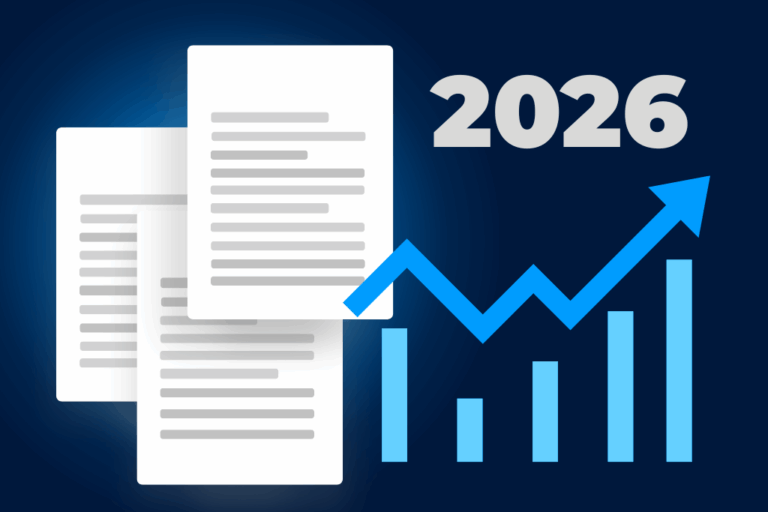There are numerous challenges when it come to AI ethics and efficiency for modern board rooms. What happens when speed and security clash with values and transparency?
As digital board portals and AI-driven governance tools gain traction, General Counsels and corporate secretaries are increasingly navigating a tension. How can legal leverage AI-powered technology for strategic agility while safeguarding ethics – in all ways.
Efficiency has always been a goal in governance. But with AI-enhanced digital boardrooms now capable of predictive insights, automated document workflows, and real-time decision support, ethical considerations are no longer a peripheral concern—they’re center stage. Let’s unpack how forward-looking boards are rethinking governance to strike a responsible balance.
AI and Automation: The Efficiency Engine of Modern Boards
Nowadays, AI-driven Legal tools go further than aiding on daily tasks and gaining time. Indeed, it’s not only about how meetings are run, or how fast contracts get signed. AI now has an influence in how decisions are made and shaped. What are some of the most common AI features Board Rooms look for?
Digital board portals now offer embedded AI features that allow for:
- Smart agenda building and priority setting based on past board decisions
- Natural language processing (NLP) to extract and summarize key points in board materials
- Predictive analytics for scenario planning, regulatory compliance, or risk detection
These features are streamlining governance processes and freeing board members to focus on high-value discussions. More importantly, they’re redefining what boardroom “efficiency” means: not simply faster meetings, but smarter, data-driven governance. In this context, the main concern lies on how much and in what form AI shapes such “smarter and data-driven governance”.
Boards must ask: Whose logic drives our governance, and is it aligned with our ethical principles?
Digital Board Room Ethical Implications
AI systems aren’t magical—and they don’t operate effectively without human involvement. When boards choose to integrate AI tools or digitize governance processes, those choices inherently reflect the organization’s values—as well as the blind spots embedded in the underlying data and design.
As if governance weren’t complex enough, AI introduces an additional layer of compliance scrutiny. And with it, a new set of ethical risks that boards and legal teams must proactively address.
These risks typically fall into three categories: algorithmic bias, opacity, and data sovereignty.
Algorithmic Bias
Bias in AI isn’t unique to LegalTech. Indeed, it’s a widespread concern across every industry adopting generative models. But in the context of governance, the stakes are higher. AI systems are built and trained by people, as a result, when implementing AI-powered features into your governance workflows, the model naturally adapts to the needs and interests of your organization. However, even well-intentioned systems can develop unintended favoritism.
What does that mean? AI models may unintentionally favor certain risk profiles, geographic regions, or stakeholder perspectives—ultimately skewing board-level insights or recommendations.
This typically stems from training data that is incomplete, outdated, or biased in its own right. And while human oversight mitigates some of these risks, it doesn’t eliminate them. For boards to truly benefit from AI, teams must ensure that governance tools are being trained on representative, high-quality data—without leaving jurisdictions, industries, or perspectives that matter behind.
Lack of Transparency
When a generative AI tool recommends a course of action, all the implicated parties must be able to understand how the conclusion was reached. As fast and obvious as it can seem, teams must build trust in their AI from verified transparency, not blindly.
Board members and legal teams must have visibility into the reasoning process—particularly in high-stakes areas like ESG disclosures, regulatory reporting, or compliance assessments. When we think of GenAI, teams must have in mind most of it operates as black-boxes. Operating as a black box simply means the internal workings of such models are unknown to users. This is especially true for open-access GenAI tools—unlike proprietary AI, which is far better suited to legal and governance use cases. The main problem with the former is that if a tool summarizes board materials, flags a potential risk, or proposes a mitigation strategy, the logic behind that output must be traceable and auditable.
Without this visibility, legal teams can’t confidently rely on the AI’s output—or defend it if questioned. That’s why it’s essential for governance platforms to prioritize explainability by design. Legal and compliance leaders should work with tech partners to demand clear documentation, audit trails, and—ideally—solutions built with private, proprietary AI from the ground up.
Data Sovereignty
We know boards handle highly sensitive data, which can pose challenges and risks when bringing AI into the picture. More than being a technical issue, ensuring compliance with your local requirements is a governance imperative. When AI comes into play, many questions can arise: Where is our data stored? Who has access to it? Is it processed in line with regional laws everywhere we need?
Similarly to the “black box” aspect of GenAI, many models rely on cloud-based infrastructures that may process or store data in specific jurisdictions that may not always match your compliance needs. This should usually be disclosed by your chosen partner, and again, to avoid issues it’s recommended to go for LegalTech tools providing proprietary and local AI. The key takeaway here is that governance platforms must align with your regulatory landscape from the outset. This means working closely with providers to map data flows, ensure residency where required, and confirm that AI components respect your organization’s compliance boundaries.
Think of it as having all your life savings in one place—it’s about knowing where your data lives and making sure it stays where it legally (and ethically) should.
Principles for Responsible AI Governance
Now, the last section may seem overwhelming, and the risks exist, but that doesn’t mean there’s no room for AI in governance. It simply needs guardrails. Besides aiming to move faster or generating greater ROI, the goal is also to move smarter. Here are some principles to follow in order to do so with integrity built into every decision point.
1. Human Oversight is Mandatory
No matter how advanced AI gets, strategic calls—especially around M&A, executive pay, or social matters—must stay in human hands. Tools can guide but can’t decide. It’s the board’s responsibility to weigh context, nuance, and long-term impact. Remember AI can help shape the conversation, but it shouldn’t replace the judgment behind it.
2. Governance by Design
Ethics, ESG, and compliance shouldn’t be an afterthought. The platform you choose needs to build them in from the ground up rather than trying to patch them on later.Choose platforms that treat ESG, compliance, and risk as part of the core architecture. If your board workflow doesn’t surface these issues by default, it’s either time to re-think the tech or change it.
3. Transparency and Auditability
If your AI tool flags a risk or suggests a course of action, you need to know exactly how it got there. Legal teams should have access to clear documentation, audit logs, and rationale behind every output. There’s no room for risky takes when it comes to board decisions, so if it can’t be explained, it shouldn’t be used.
4. Cross-Functional Governance Teams
Governance tech extends far beyond the legal department. Key teams like compliance, risk, sustainability, and IT need to be involved from the start and work together to set guidelines and oversight. AI decisions shouldn’t fall on just one team or person. If it fits your company’s structure, consider building cross-functional task forces to make sure all risks and requirements are covered.
The Future Lies in Smarter, Fairer, and More Accountable Boards
AI ethics and efficiency are two things that can peacefully cohabitate if done right. Digital boardrooms powered by AI and advanced automation have the potential to raise the standard of corporate governance—if implemented responsibly.
Efficiency is only truly valuable when it reinforces, rather than erodes, the ethical core of decision-making. And as regulatory and societal expectations around ESG, compliance and AI ethics continue to grow, technology must serve as a bridge.
For boards and legal departments ready to lead with both performance and principle, the future is accountable, transparent, and fair.


